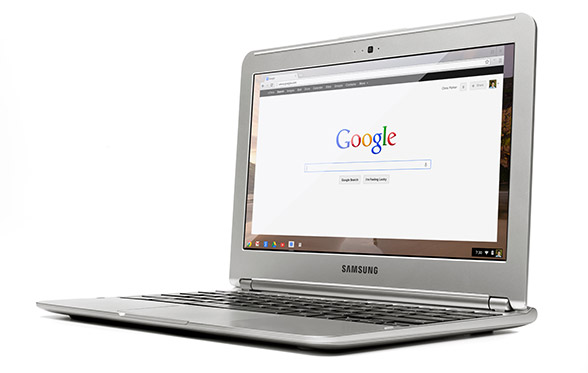
This year, each eighth-grader at Watertown Middle School has his or her own laptop to use at school, and the reviews have been very positive from both students and teachers.
As part of the pilot project known as the 1:1 Chormebook Initiative, the students get to use a Google Chromebook while they are at school. They also have access to the Google Drive to look up assignments, organize their papers and keep track of the assignments, a group of students told the School Committee Monday night.
WMS Student Council President Susie Howard said the students save about 15 minutes per class by not having to pick up, turn on the Chromebooks at the start of class, and then put away and make sure the wires are plugged in at the end of class.
A feature called Google Classroom allows student to look up homework assignments so that they do not lose them or forget about them.
Students said as long as they have internet access, they can use the Chromebooks anywhere, anytime.
Leah Maroni-Wagner, the middle school Librarian, surveyed teachers and students to find out what they thought of using the Chromebooks.
Students said they enjoyed not only being able to answer questions online, but then look at their classmates answers, as well, Maroni-Wagner said. Others said they can type faster than they can write, and that they can look up an answer as soon as they have a question.
Teachers no longer have to make lots of paper copies for their classes, said Toni Carlson, K-12 Educational Technology and Library Coordinator, and not having to spend time for the students to pick up and put away the Chromebooks is a big plus.
“If we save 15 minutes out of every class, that is a huge amount,” said School Committee Chairwoman Eileen Hsu-Balzer.
When she looked at which classes the Chromebooks are used for, Maroni-Wagner found that 99 percent used it for science, 98 percent for world history and English, 82 percent for math and 63 percent in world language. Maroni-Wagner noted that the world language classes have iPads, so that might have accounted for the lower percentage of usage.
When asked what could be done to improve the 1:1 Chromebook Initiative, 37 percent of students said improve Wifi service in the school (there are some dead spots, Maroni-Wagner said), and 30 percent said “let us bring the Chromebooks home.”
When asked if they would like to take the Chromebook home, 75 percent said yes, Maroni-Wagner said.
One concern the School Committee and school officials have is whether students have access to a computer in their homes.
Maroni-Wagner surveyed 153 students and found only one did not have internet access at home. Eleven do not have a computer with a keyboard, she said, meaning they only have an iPad or other tablet.
“That makes it harder to type when they have assignments,” Maroni-Wagner said.
Some students said they have a computer, but they have to wait to use it because other family members use it, too.
The pilot program has worked so well that district administrators want to expand it, Toni Carlson said.
“Next year we hope to roll it out to ninth- and 10th-grades, and maybe seventh,” Carlson said. “The following year we will expand to 11th and 12th, and if we do not do seventh the first year, definitely the second.”
Before having one Chromebook for each student, the middle school used a Chromebook cart which could be used by teachers. Buying computers without the cart would be cheaper, Carlson said, and they last four to five years.
Great, but what about 6th grade?